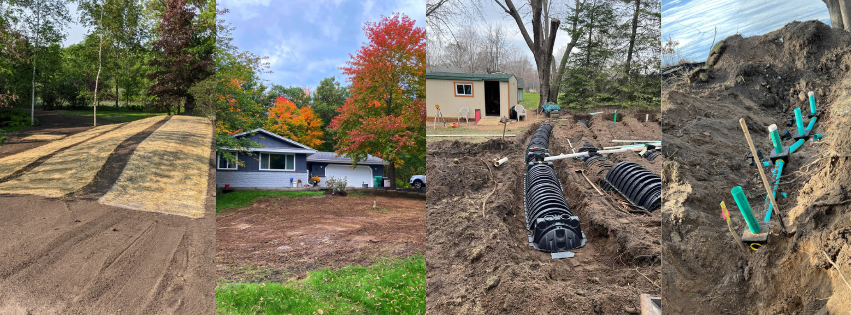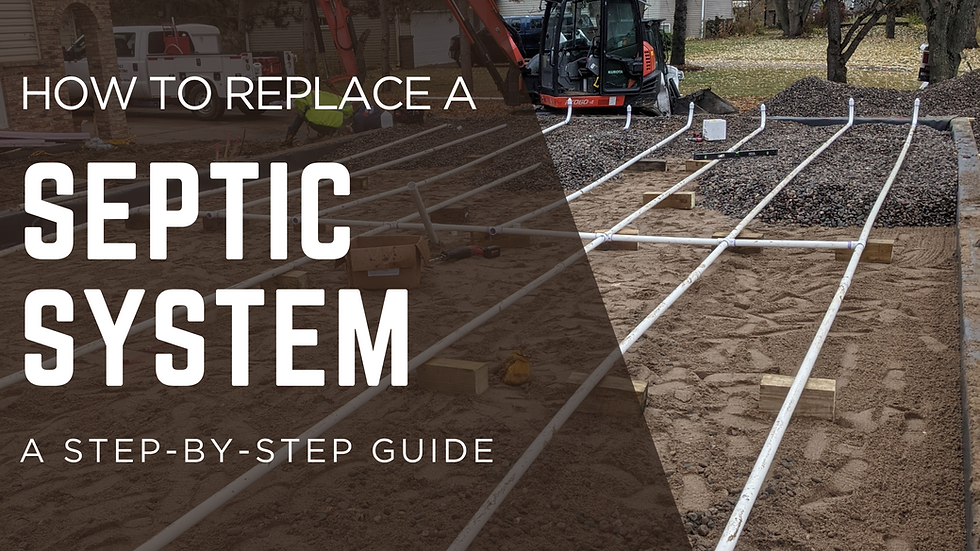What type of Septic System Do You Need?
- berresexcavating
- Jun 16
- 2 min read

What's the Difference Between a Mound, Drain Field, Box, and Trench Septic System?
When it comes to installing a septic system, one size doesn’t fit all. The right system for your property depends on several factors—soil type, water table, available space, and local regulations. At Berres Excavating, we work with homeowners and top designers across Minnesota to see which system type best fits each site.
In this post, we break down the four most common types of septic systems: mound systems, drain field systems, box systems, and trench systems—and explain how they work and when they’re used.
1. Mound Septic System
A mound system is designed for properties where the native soil is too shallow or poorly draining. This system involves building a raised sand mound on top of the natural soil, into which effluent is pumped and filtered.
Best for:
Areas with high water tables
Shallow or clay-heavy soil
Properties that can’t support a traditional drain field
Pros:
Works on challenging soil conditions
Can be installed where other systems fail
Cons:
More visible and larger footprint
Higher installation and maintenance costs
2. Drain Field System (Conventional System)
A drain field system, also known as a gravity system, used to be the most common type of system. It uses a septic tank that drains naturally into a network of perforated pipes buried in trenches. Wastewater is filtered through the surrounding soil.
Best for:
Homes with deep, well-draining soils
Properties with enough open space
Pros:
Simple, low-maintenance
Cost-effective for suitable sites
Cons:
Requires good soil percolation
Not suitable for properties with shallow bedrock or high water tables
3. Pressure Bed
A Psi. Bed System includes a effluent pump that distributes wastewater to the drain field line evenly. This allows better control over water flow and equal distribution across the bed.
Best for:
Flat Properties
Systems where balanced distribution is critical
Pros:
Prevents overloading one area
Helps extend system life
Cons:
Can clog or tilt over time if not maintained
Requires proper installation and leveling
4. Trench System
A trench system is a type of drain field system that uses long, narrow trenches filled with gravel or other media, with a perforated pipe running through each. It's one of the most common layouts for dispersing effluent into the soil.
Best for:
Level properties with deep, absorbent soil
New construction with adequate space
Pros:
Simple design
Cost-effective for ideal soil conditions
Cons:
Not ideal for tight or shallow lots
Soil saturation or compaction can reduce performance
Which System Is Right for Your Property?
Choosing the best septic system isn’t just about budget—it’s about getting a system that fits your land, lasts for decades, and keeps your family and environment safe. That’s why Berres Excavating partners with top licensed designers and soil experts to guide our customers through every step.
Ready to Install a Septic System?
Whether you need a mound system for high water table soils, a drain field system for a rural build, or you’re unsure which type is best, Berres Excavating is here to help.
Serving Isanti, Rochester, Andover, and surrounding Minnesota communities
Call us at 612-801-6939
Email: info@berresexcavating.com
Berres Excavating – We Set the Standard.





Comments